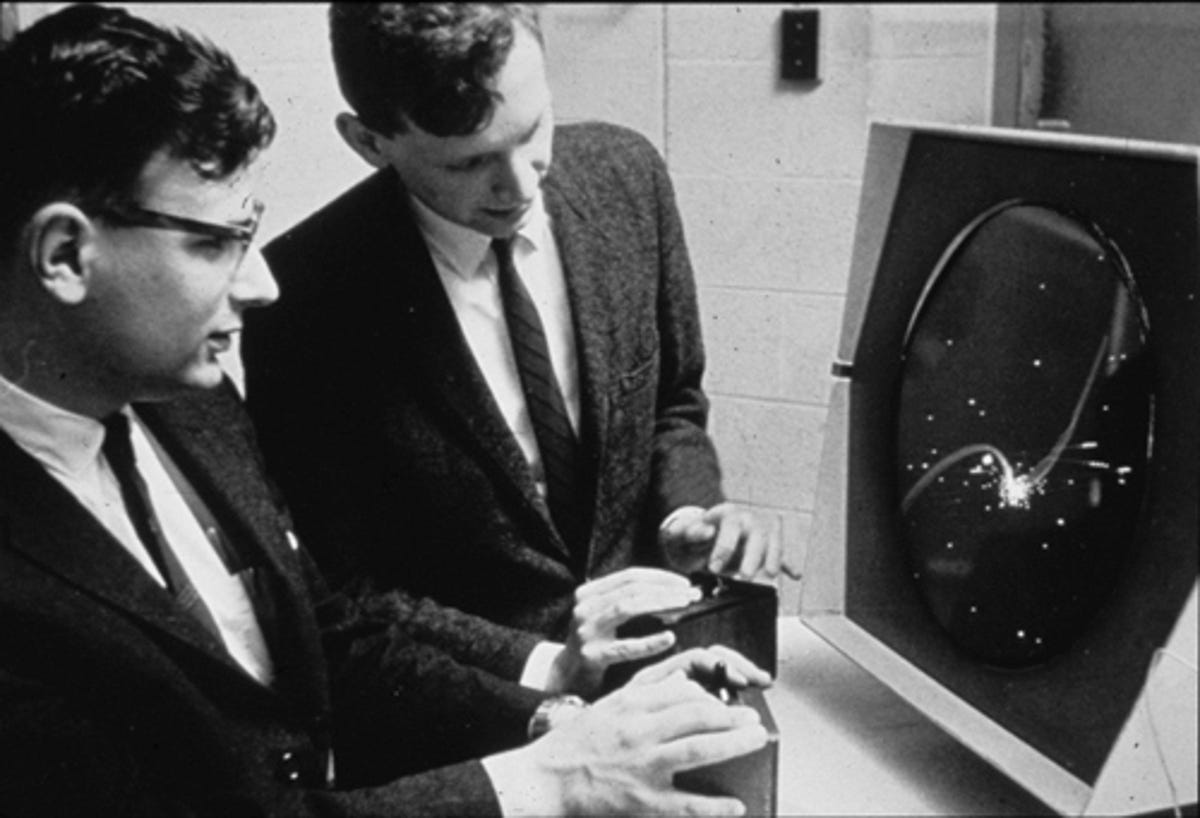Video game Spacewar reborn at 50 (photos)
Spacewar, one of the first computer video games ever written, is commemorated at its birthplace at MIT with a simulation and celebration.

Spacewar in the beginning
Spacewar was one of the first computer video games ever written and one of the most influential. Created for Digital Equipment's PDP-1, a minicomputer that allowed for new types of user interaction and graphics, the game was originally written by MIT student Steve Russell, with significant improvements later added by Peter Samson, Dan Edwards, and Martin Graetz. Released in 1962, it wasn't the first video game ever made, but people who were interested in computers in the '60s knew about it and had access to it. Spacewar also helped inspire future games, such as the arcade classic Asteroids. For the 50th anniversary of its release, MIT created a simulation that lets people play the game. The simulation was shown off Thursday and Friday on the campus, and the MIT Museum also hosted an event Friday with Graetz participating in a panel discussion. In this archival shot, we see Dan Edwards on the left and Peter Samson playing Spacewar on the PDP-1 display.
Spacewar simulation
To celebrate the 50th anniversary of the creation of Spacewar, MIT students created a simulation on a tiny computer with about the same processing power as the original PDP-1. Pictured here on the left is Phillip Tan, the executive director of the Gambit gaming lab at MIT, who oversaw the simulation project. Next to him is Kaivan Wadia, an undergraduate student who wrote the code for the Arduino computer in the box on the table. The first person left of the screen is graduate student Owen Macindoe, who did the "digital archaeology" to decipher the original game's source code. To the right of the display are Lily Tran and Generoso Fierro, who built the screen to look like a larger version of the original PDP-1 display.
Steve Russell
Steve Russell, the game's creator, shows how the game was played on the PDP-1, at an event at the Computer History Museum in California last year. People later created standalone controls to make it easier to play and see the display at the same time.
PDP-1
Hard as it may be to believe now, this machine was once considered a minicomputer. This is a picture from the manual of the PDP-1, which Digital Equipment Corp. started making in 1959. It was a break from the mainframe computer designs of the time in that it focused on interaction with the user rather than efficient use of computer cycles, according to the Computer History Museum.
Peering in
One of the reasons Spacewar was created was that the PDP-1 on MIT's campus wasn't scheduled at every moment of the day. That allowed students to try new things, experiment, and use the computer for fun things such as games and music.
A new generation enjoys
Spacewar itself is played by operating a spaceship and firing torpedoes at your opponent. There is a thrust control, a firing gun, and the ability to go into hyperspace, where the spaceship reappears at a random spot. Here, two MIT students try the simulation game out on Thursday.
Spacewar simulation
If you've played the video game Asteroids, you'll quickly feel comfortable with Spacewar There are two significant differences, however. Asteroids, which was inspired by Spacewar, is a single-player game, versus a two-player. Also, Spacewar has a sun in the middle that pulls the spaceships toward the center. The actual physics of the gravitational pull are accurate and add a challenge to the game. Players could also use the gravitational pull to slingshot around the sun.
Arduino controller
The game was ported over to the Arduino, an open-source electronics hardware platform that is often used for prototyping. The microcontroller, seen on the right, has about the same computing power as the original PDP-1.
PDP-1 terminal
In this photo taken by Joi Ito, now head of MIT's Media Lab, we see a PDP-1 running Spacewar in full color.
Steve Russell with PDP-1
Spacewar creator Steve Russell stands by an operational PDP-1 (1960), the computer he used to create the game at the Computer History Museum in 2011.

